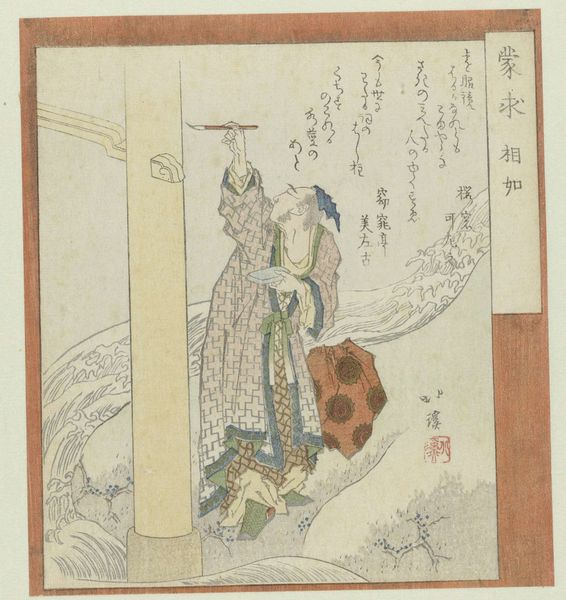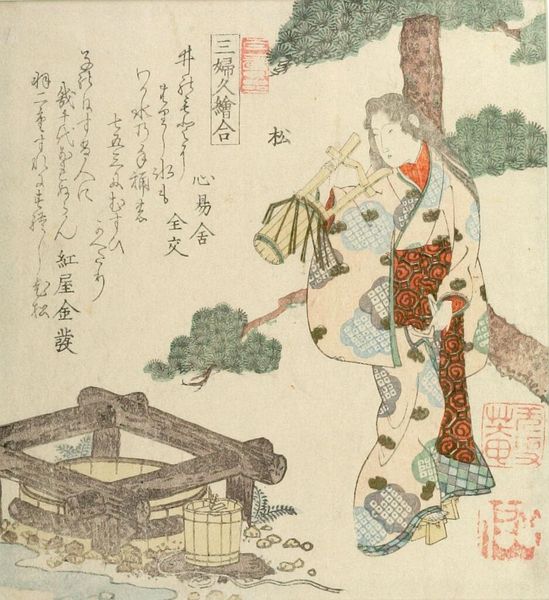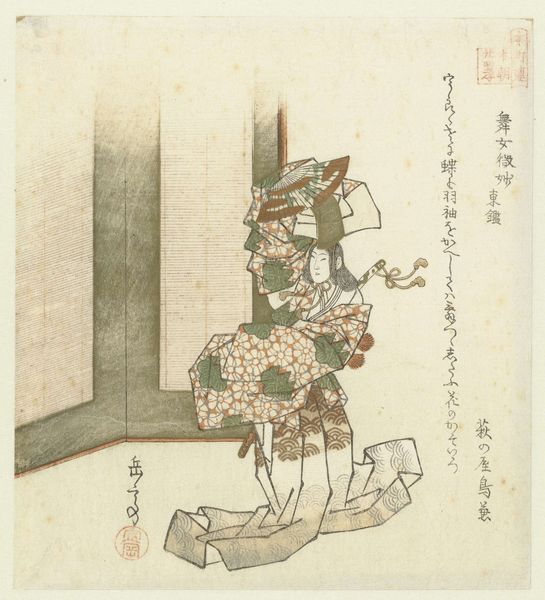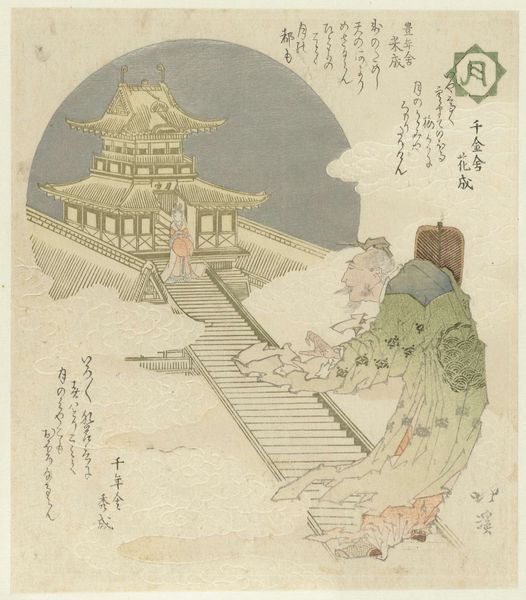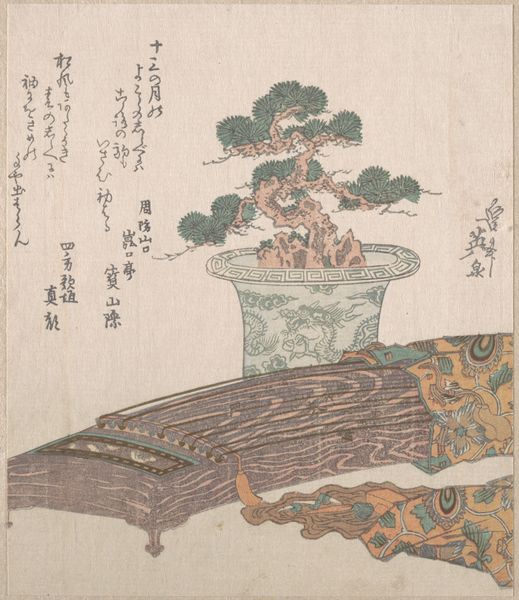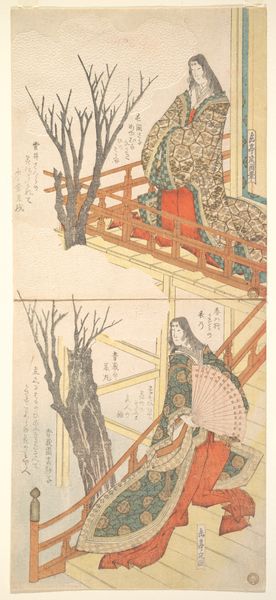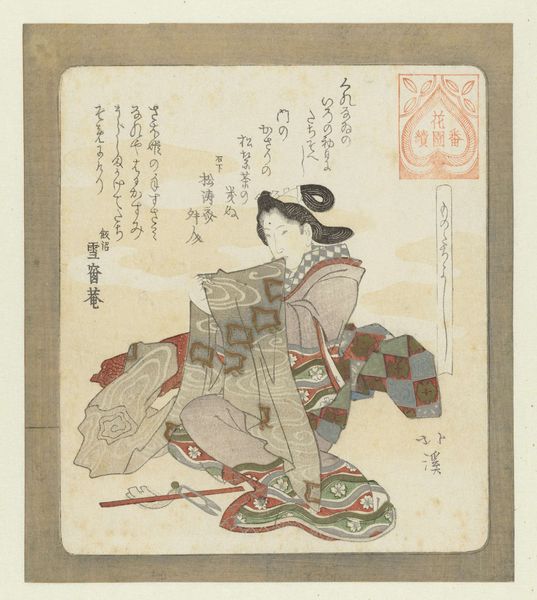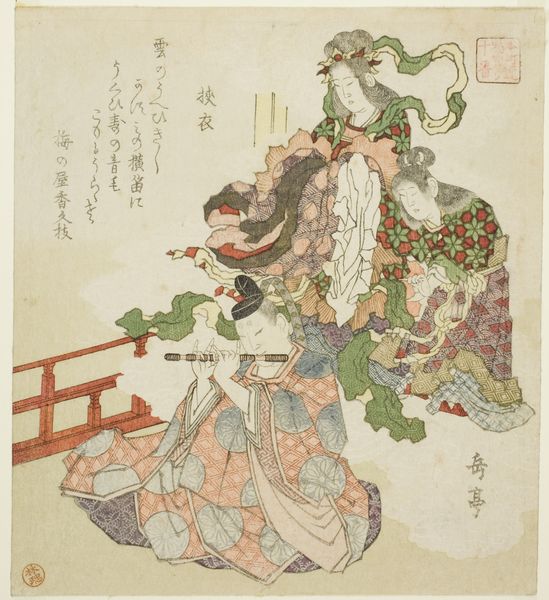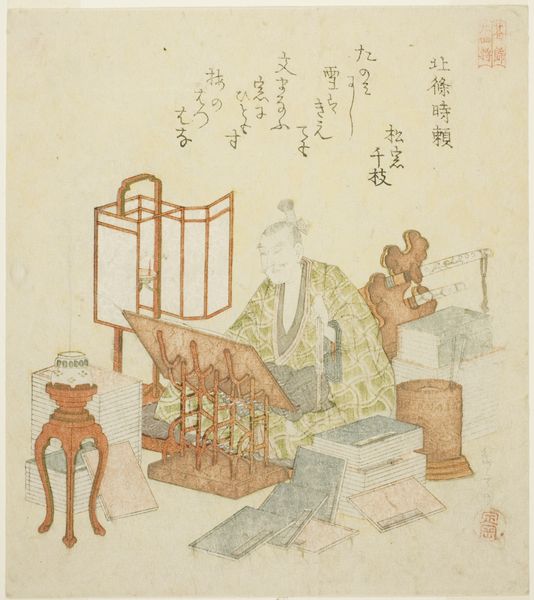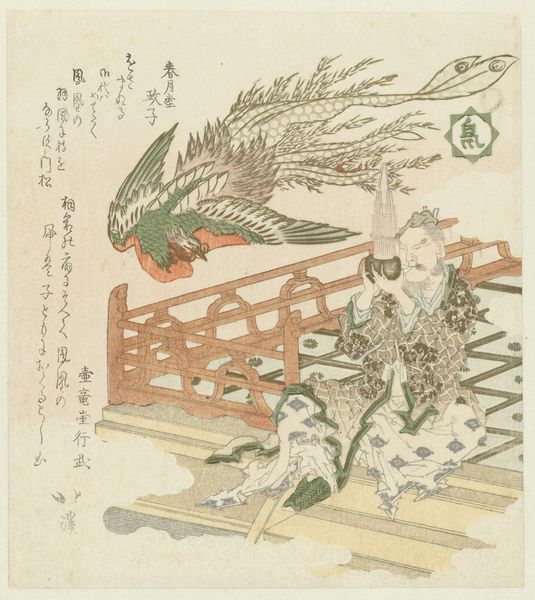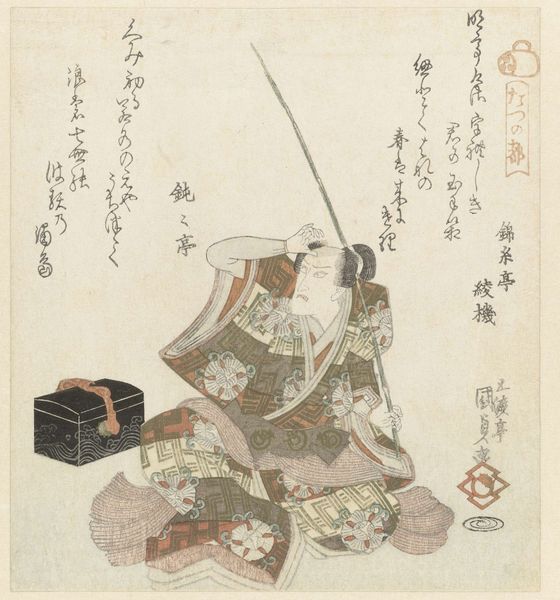
Twenty-four Japanese examples of filial piety for the Honchôren c. 1821
0:00
0:00
yashimagakuteiwudaoyueting
Rijksmuseum
print, woodblock-print
#
narrative-art
# print
#
asian-art
#
landscape
#
ukiyo-e
#
figuration
#
woodblock-print
Dimensions: height 202 mm, width 181 mm
Copyright: Rijks Museum: Open Domain
Curator: Here we have Yashima Gakutei's woodblock print, "Twenty-four Japanese Examples of Filial Piety for the Honchoren," created around 1821. What strikes you initially about this piece? Editor: The figure seems strangely detached, almost hovering. There's a certain emotional austerity in the way the lines don't quite connect, a loneliness, maybe? The colors also seem muted, contributing to this air of melancholy. Curator: Let's delve into that sense of detachment. Woodblock prints were, of course, a very specific kind of commodity. Considering that Gakutei was catering to the Honchoren poetry club, likely affluent members of society, how does the mode of production influence what the artist creates for this niche market? Editor: Right, understanding that audience and process is crucial. That distance you sense could speak to idealized values of piety and devotion – a performance for this select social group rather than an intimate, personal statement. Consider the visual language of honor. Her attire broadcasts privilege. That elevated perch on what appears to be an impossibly tall architectural structure also separates her. The composition as a whole promotes her status. Curator: And this relates to filial piety itself – the reverence and obedience to elders and ancestors, a cornerstone of Confucianism deeply ingrained in Japanese society. How is that idea visually communicated here, considering what this symbol means to society? Editor: That is where the architectural setting, as you called it, interests me most. I recognize that this relates to the ideals and virtues that underscore the importance of family obligations in Japanese society. But I do find myself intrigued by her surroundings as a symbolic setting and how the design relates to societal class, as well. Curator: You bring up fascinating connections. It seems to be saying something beyond merely displaying her position, perhaps reinforcing moral values? These narrative elements underscore a very particular cultural ideal which must resonate with those who bought them. The materials, wood and ink, rendered carefully but produced en masse for a particular paying audience, are far removed from what she is showing as virtue. Editor: So the image works on multiple levels. It displays ideals of proper conduct. However, for a wealthy consumer base it provides luxury and elevated beauty in its execution with the method of printmaking for its production and sale. These are, of course, what make it a striking piece that engages the viewer in dialogue about class, money, piety, and familial relations. Thank you.
Comments
No comments
Be the first to comment and join the conversation on the ultimate creative platform.
